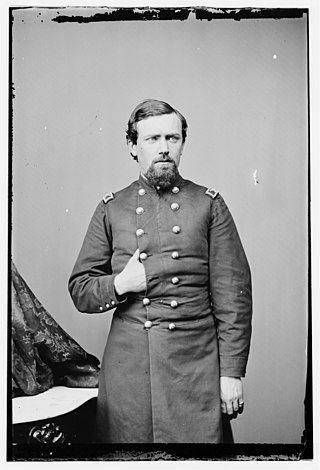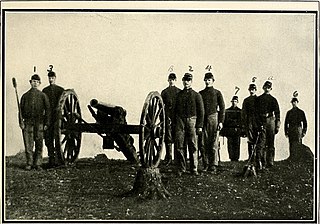Service
![Ft Marcy with Company A 4th New York Artillery [Top picture] man at the right in front of the tent is William Arthur-brother of US President Chester Alan Arthur. The Photographic History of The Civil War Volume 05 Page 103.jpg](http://upload.wikimedia.org/wikipedia/commons/thumb/5/50/The_Photographic_History_of_The_Civil_War_Volume_05_Page_103.jpg/250px-The_Photographic_History_of_The_Civil_War_Volume_05_Page_103.jpg)
The regiment was organized at New York City, New York, beginning November 1861 through February 1862 and mustered in at Port Richmond, Staten Island, for three years service under the command of Colonel Thomas Donnelly Doubleday. The regiment was designated as the 1st New York Heavy Artillery on January 27, 1862, and soon renamed 4th New York Heavy Artillery on February 8, 1862. Four batteries from the 11th New York Heavy Artillery were assigned to the regiment on July 25, 1863, as Batteries I, K, L, and M.
Battery A – mustered in November 1861
Battery B – mustered in November 1861
Battery C – mustered in December 1861
Battery D – mustered in January 1862
Battery E – mustered in February 1862
Battery F – mustered in February 1862
Battery G – mustered in January 1862 [1]
Battery H – mustered in January 1862
The regiment was attached to Military District of Washington to May 1862. Whipple's Command, Military District of Washington, to October 1862. Abercrombie's Division, Defenses of Washington, to February 1863. Abercrombie's Division, XXII Corps, Department of Washington, to April. 1st Brigade, DeRussy's Division, XXII Corps, to May 1863. 4th Brigade, DeRussy's Division, XXII Corps, to December 1863. 3rd Brigade, DeRussy's Division, XXII Corps, to March 1864. Artillery Brigade, VI Corps, Army of the Potomac, to May 1864 (consisting of Batteries C, D, L, and M, organized as 1st Battalion). Artillery Brigade, V Corps, to May 1864 (consisting of Batteries E, F, H, and K organized as 2nd Battalion). Artillery Brigade, II Corps, to May 1864 (consisting of Batteries A, B, G, and I organized as 3rd Battalion). Artillery Brigade, II Corps, May 31 to June 25, 1864. 1st Brigade, 3rd Division, II Corps (1st Battalion). 2nd Brigade, 3rd Division, II Corps (2nd Battalion), June 25 to July 13, 1864. Artillery Reserve to August 1864. Unattached, 1st Division, II Corps, to September 1864. 4th Brigade, 1st Division, II Corps, to March 1865. 2nd Brigade, 1st Division, II Corps, to June 1865. 3rd Brigade, DeRussy's Division, XXII Corps, to August 1865. 2nd Brigade, Department of Washington, to September 1865. Battery I with Artillery Brigade, II Corps, July to December 1864. Battery L with Artillery Brigade, II Corps, July 1864, to March 1865. Battery C with Artillery Brigade, II Corps, October 1864 to May 1865.
The 4th New York Heavy Artillery mustered out of the service at Washington, D.C., on September 29, 1865.









